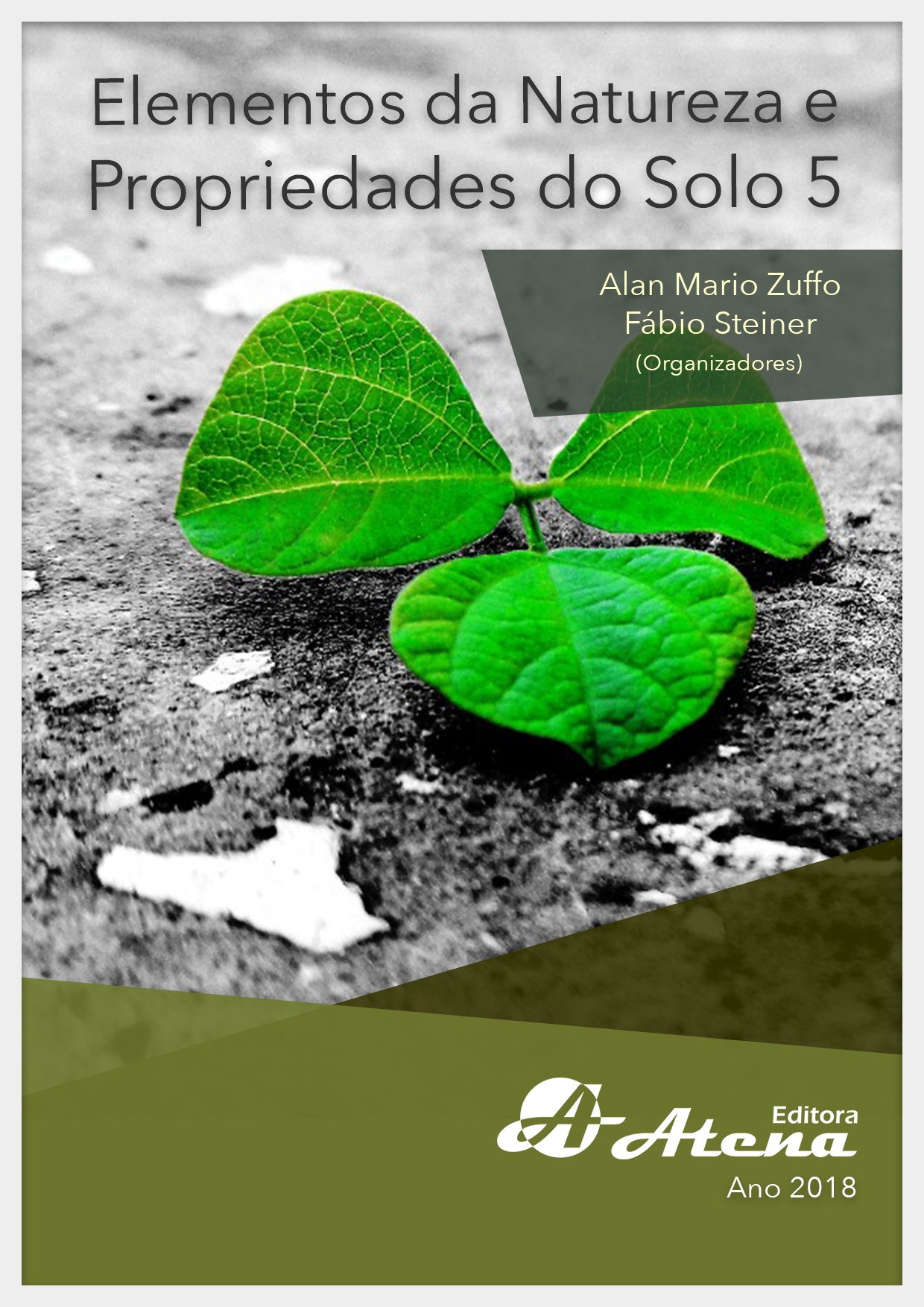
INFLUÊNCIA DA ADUBAÇÃO FOSFATADA NA PARTIÇÃO DE FOTOASSIMILADOS DA CULTURA DO MILHO
O fósforo (P) é um nutriente essencial
para a produção da cultura do milho e o manejo da
adubação fosfatada pode influenciar na distribuição
dos produtos da fotossíntese (fotoassimilados).
Diante disso, o objetivo deste trabalho foi
avaliar a influência da adubação fosfatada na
partição de fotoassimilados da cultura do milho.
O experimento foi realizado em vasos, na casa
de vegetação, com delineamento experimental
inteiramente casualizado, com três doses de P2O5
(100, 250 e 350 kg.ha-1) e quatro repetições. Para
a avaliação da partição de fotoassimilados, foi
realizada a coleta das plantas na fase vegetativa
de desenvolvimento inicial do milho (V3) e obtidas
a massa seca das partes folha, colmo e raiz,
separadas. Os dados foram submetidos à análise
de variância e as médias comparadas pelo teste
de Tukey a 5% de probabilidade. Na dose 100
kg.ha-1, a porcentagem de fotoassimilados foi
maior nas raízes que nas folhas e no colmo. Nas
doses de 250 e 350 kg.ha-1, a porcentagem de
fotoassimilados nas folhas foi maior que nas
raízes e colmos. Entre as doses de P2O5, a dose
100 kg.ha-1 apresentou maior porcentagem de
fotoassimilados nas raízes e menor porcentagem
de fotoassimilados nas folhas comparada às
demais. Conclui-se que a maior disponibilidade
de fósforo no solo favorece a translocação de
fotoassimilados para a parte aérea da planta,
enquanto, a menor disponibilidade proporciona a
translocação para o sistema radicular.
PALAVRAS-CHAVE: Zea mays, fósforo,
INFLUÊNCIA DA ADUBAÇÃO FOSFATADA NA PARTIÇÃO DE FOTOASSIMILADOS DA CULTURA DO MILHO
-
DOI: Atena
-
Palavras-chave: Zea mays, fósforo, nutrição.
-
Keywords: Zea mays, phosphorus, nutrition.
-
Abstract:
Phosphorus (P) is an essential nutrient
for maize crop production and the management
of phosphate fertilization may influence
the distribution of photosynthesis products
(photoassimilates). Thus, the aim of this study was
to evaluate the influence of phosphorus fertilization
in corn photoassimilates partition. The experiment
was carried out in pots, in the greenhouse, with a
completely randomized experimental design, with
three doses of P2O5 (100, 250 and 350 kg.ha-1) and
four replicates. In order to evaluate the partition of
photoassimilates, the plants were collected in the
vegetative phase of the maize initial development
(V3) and obtained the dry mass of the separated
leaf, stem and root parts. The data were submitted to analysis of variance and the means were compared by the Tukey test at 5% probability. At
the dose 100 kg.ha-1, the percentage of photoassimilates was higher in the roots than in the
leaves and in the stem. At doses of 250 and 350 kg.ha-1, the percentage of photoassimilates
in the leaves was higher than in the roots and stems. Among the P2O5 doses, the dose
100 kg.ha-1 presented a higher percentage of photoassimilates in the roots and a lower
percentage of photoassimilates in the leaves compared to the others. It is concluded that
the greater availability of phosphorus in the soil favors the translocation of photoassimilates
to the aerial part of the plant, while the lower availability provides the translocation to the
root system
-
Número de páginas: 15
- Gentil Cavalheiro Adorian


